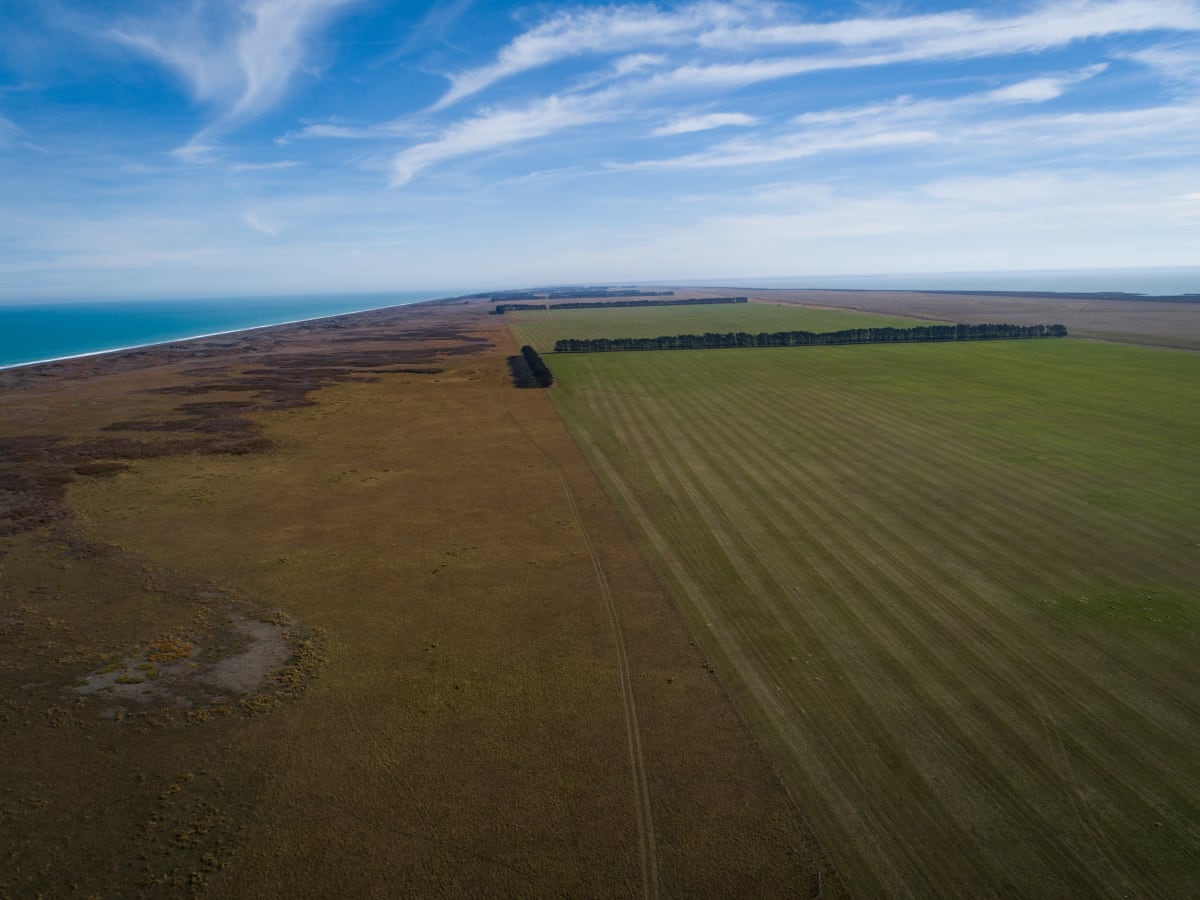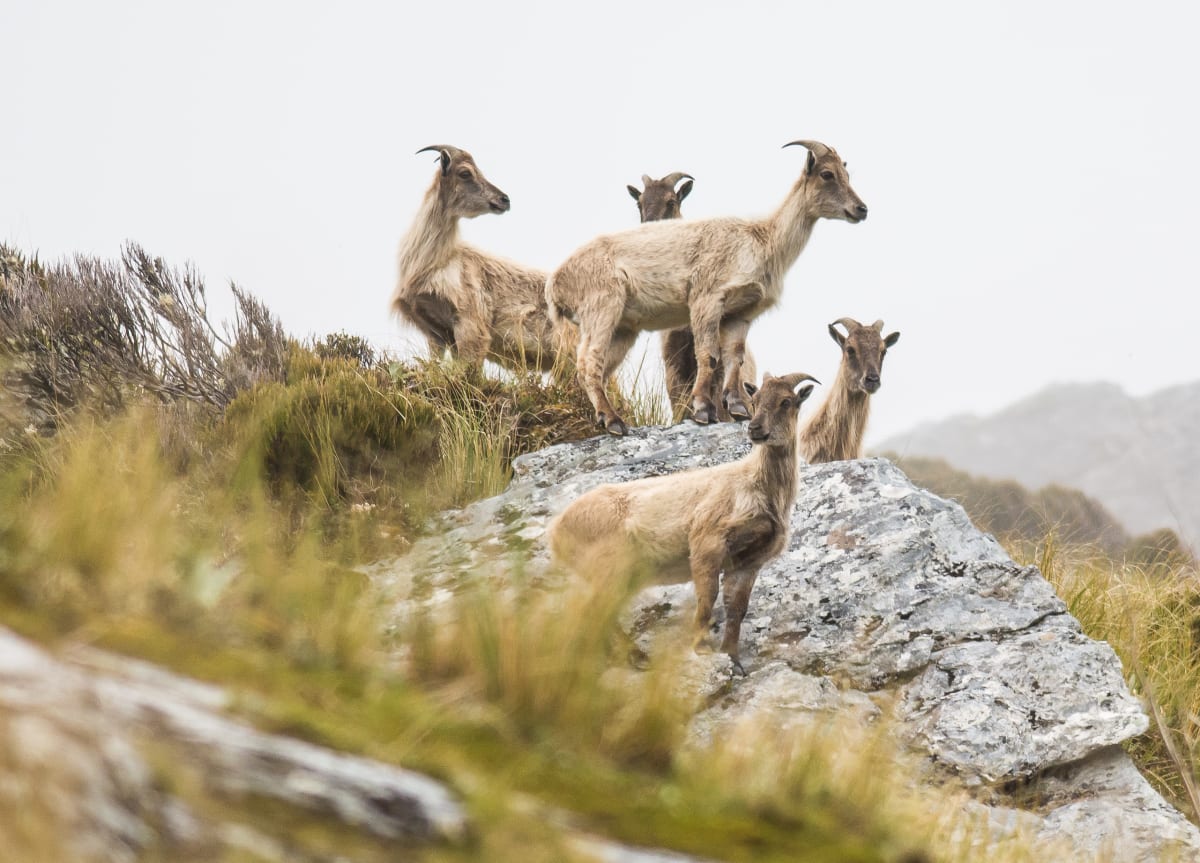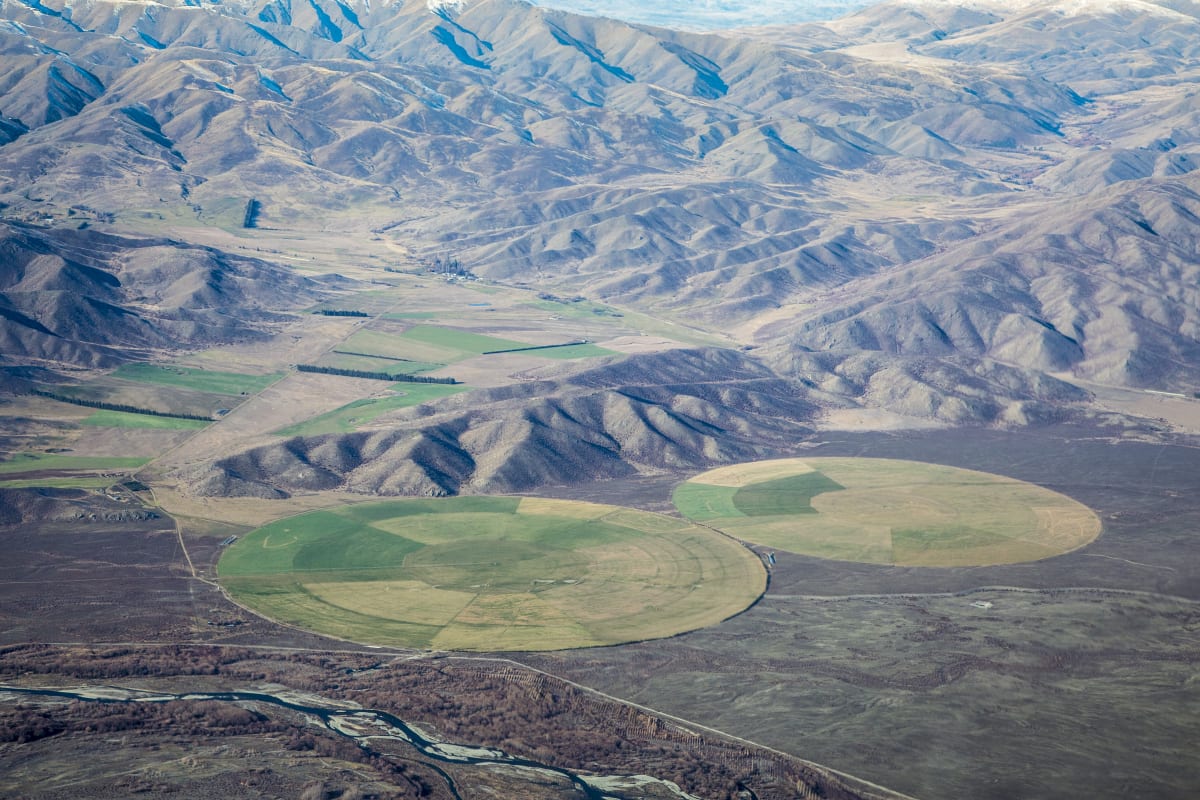In 2013, before he started looking after one of New Zealand’s treasures, the conservation estate, Lou Sanson submitted to an interview with another taonga, Radio New Zealand’s Kim Hill.
The gruff interviewer set the scene for what the then Antarctica New Zealand boss, and former Southland conservator, was walking into as director-general of the Department of Conservation. The beleaguered and somewhat broken department had been demoralised by a series of restructures, layoffs and budget cuts.
“Your predecessor Al Morrison has said DoC can’t met its statutory obligations to safeguard the conservation estate,” Hill said.
As then minister Nick Smith put it, the department had to be “more responsive to modern needs” – shorthand for leaning on volunteers and business donations to do conservation work.

If people or businesses want to engage with conservation, the strategy – generated from within the department, Sanson pointed out – called for a way to make that happen.
There were risks to commercial partnerships, Sanson admitted to Hill, but overall they were a good thing, and, importantly, they reflected the direction of the government.
The national carrier, Air New Zealand, promoting great walks around the world boosts the sales of seats on its planes and boosts revenue for the department.
“That has to be a win-win for New Zealand.”
Fast-forward to yesterday – less than a fortnight until he leaves as DoC boss – and Sanson’s tune is the same.
“That has been a great success,” he says of commercial partnerships. He tells Newsroom, proudly, they have pulled in more than $70 million from the likes of Air New Zealand, Genesis, Meridian, and Toyota.
But it’s more than that, he says. Air New Zealand gave DoC its “high performance engagement industrial relations model”, which, Sanson enthuses, is “probably the best in the public service”. When there’s a whale stranding, contracting company Fulton Hogan picks up the phone.
Energy giant Meridian provides alternative energy on remote islands. Sponsorship from another energy company, Genesis, has led to a tripling in number of whio. And the department will now work on farm plans with dairy giant Fonterra, to protect and restore waterways, Sanson says.
Dyed-in-the-wool conservationists will be flinching at such partnerships – seen as unholy alliances that bring more benefit to big corporates.
But Sanson declares: “I have never felt compromised. We agree to disagree, and there’s been a couple of times that we made it very clear that we can’t agree with this. We’ve very carefully set those partnerships up so we maintain our regulatory role.”
Those who distrust the department’s chumminess with business might be hoping Sanson’s successor, Penny Nelson, steers DoC back into more familiar waters – sailing away from commercial partnerships and back to steadfastly upholding its legislation and statutory documents.

DoC’s lack of advocacy has meant, at times, it has been left to environmental and recreation groups like Federated Mountain Clubs (FMC) and Forest & Bird to stand up for conservation.
Those organisations went to the High Court, and won, over proposed recreational aircraft landings in the Paparoa National Park. And it was Forest & Bird that exposed the clearance of a rare plant at Kaitorete, near Christchurch, and took court action to stop more destruction.
Despite that, FMC president Jan Finlayson, of Geraldine, is complimentary of Sanson’s early years, keeping the department together when it was starved of funds under a National-led Government. “When he came in he got the department back into working order, structurally, and lifted morale.”
Another impressed with the department’s rebuild under Sanson is Gary Taylor, chief executive of Auckland-based Environmental Defence Society. Sanson provided leadership to the department in a way Morrison didn’t, he says – “Morrison was an administrator, and not a very good one”.
“In terms of actual outputs, he’s got predator-free standing up now and working. I think that he’s been working under antiquated and arcane processes and legislation that have made the job incredibly challenging, and made a good fist of it.”
Sanson’s also very accessible. Our request for an interview was agreed to within an hour, and arranged for the following day.
“The thing I like most about Lou, he’s always there when you want to raise something with him,” Taylor says. “You can’t say that of all chief executives.”
Even those who disagree with Sanson believe he’s a people person who genuinely cares. “I did an awful lot to bring that safety culture into Antarctica NZ and I feel I’ve done the same here,” he says.
Kevin Hague, the former Green Party MP who heads Forest & Bird, says creating a health and safety conscious culture within DoC was important. “He has succeeded and I think that’s very much to be applauded.”
An unlikely ally for the outgoing DoC boss, perhaps, is Peter de Lange. The botanist, now an associate professor of conservation and biodiversity at Unitec, left the department in 2017, after 27 years, disillusioned at its direction and ineptitude. But he never blamed Sanson.
At a farewell speech on Rēkohu/Chatham Island early last month, De Lange said he rated Sanson the best director-general he worked for.
“This was because he was approachable, personable, and interested. If you had an issue he was only too happy to discuss it with you. He had an interest in science, and was always fascinated by one’s science outputs.
“Lou loved to talk over the findings of research, and enjoyed talking to the department’s scientists. If you sent him a publication he read it and he asked questions about it.”
His biggest success, however, was saving lives, De Lange said.
“When he started in DoC, people were dying in the field, on the road, they were driving exhausted, they were fatigued from the loss of key staff through restructurings prior to Lou’s arrival. Lou put a stop to this, he prioritised staff, and in doing so he saved lives.”
Thanks to a change in government, the department has enjoyed an increased budget. In this financial year, conservation’s budget is $825 million, of which $708 million is departmental funding and $117 million is non-departmental, multi-year or contingencies.
Increased landscape-scale pest control, chiefly through drops of 1080 poison, has been a hallmark of Sanson’s career.
Yet some question the department’s commitment to reversing the biodiversity crisis.
Noted botanist Sir Alan Mark, of Dunedin, says the public conservation estate has deteriorated under Sanson’s leadership.
In particular, management of tahr has been “highly negligent”, he says, with numbers able to increase beyond the regulated number of 10,000 animals to something approaching 40,000 or 50,000. (The figure according to Sage, the former minister, was about 35,000.)
They were allowed to encroach into national parks, inflicting serious damage to vulnerable alpine ecosystems, he says.
Mark also points to the controversial Haast Valley grazing licence.
In June, Sanson decided not to approve it, after being told by a DoC manager: “The continuation of the licence without any measurable action from us is being watched.”
The licence violated carefully specified conditions to ensure conservation lands were minimally affected, Mark says. This was largely ignored until the department was pressured by several notable ecologists, including DoC staff.
Hague, the Forest & Bird boss, has a different take. He believes it was Sanson’s direction within DoC that helped resolve public tension over tahr, and he notes it was Sanson who decided not to grant the Haast grazing licence. “He fixed that, and good on him for doing that.”

Asked about his achievements, Sanson says he initiated predator-free New Zealand as a movement, and has driven DoC’s change from individual species protection to landscape conservation. “I think I’ve permanently changed the landscape of the way we think of biodiversity restoration.”
The lowest points were the deaths during his watch – Stu Haslett in 2014, Calvin Lim in 2017, and, in October 2018, Nick Wallis, Paul Hondelink, and Scott Theobald. “You constantly think, what could I have done to have prevented those accidents, because the whole system, all the culture’s built from you as chief executive.”
Meanwhile, a high point has been working with iwi, whānau and hapu on new models of conservation, like Te Awa Tupua, the Whanganui River, and work with Kāi Tahu on Rakiura Tītī Islands. Also bringing the wilding pines problem to ministerial attention.
He believes his successor’s biggest challenges include ensuring those people employed in the $1.3 billion Jobs for Nature project end up in meaningful jobs, and adhering to the Government’s demand for a carbon neutral public service by 2025.
Sanson says climate change will dominate the department’s “investment strategies” over the next three to four years. More regular storm events raise questions about DoC’s ability to maintain visitor facilities in places like South Westland and Fiordland – or even Abel Tasman and the Coromandel.
“We can lose up to $10 million worth of infrastructure in a single pop.”
In a quickfire round of questions:
He doesn’t think DoC should ban all cattle grazing licences – “arguably the deer are probably doing more damage”.
(Sanson says Mt Aspiring National Park was set up with an agreement to honour traditional grazing in some conservation areas in South Westland. That might be true, but that was in 1963. The park’s 1994 management plan recommended grazing be phased out, and most recent plan, from 2011, says grazing and farming are incompatible with the aim of preserving the value of national parks.)
The department shouldn’t be split into conservation and tourism arms, he thinks. It has the most integrated model of any such department in the world, he says, “and I believe it’s one of the most successful”.
Of the controversial Milford Opportunities project, which suggests removing the airstrip and banning cruise ships from tourist hotspot Milford Sound, Sanson says: “Why shouldn’t we be clipping the ticket and paying for a hell of a lot of conservation in Fiordland as a result of that?” He thinks similar schemes could be appropriate for areas like the Mackenzie Basin, and Tongariro National Park.

Forest & Bird thinks of itself as DoC’s closest friend and harshest critic.
Chief executive Kevin Hague says it agrees with the department on 90 percent of issues, and 90 percent of the time – but will happily criticise the department on the other 10 percent. Issues of disagreement include the Mackenzie Basin, a multi-million-dollar upgrade at the Ōpārara Basin, on the West Coast, and the failed attempt to include recreational aircraft landings in the Paparoa National Park management plan.
Those issues were at arm’s length from Sanson, but not so the controversial Ruataniwha dam.
In 2015, Sanson approved a land-swap, for a “net gain for conservation”, which would have enabled the Hawke’s Bay dam to go ahead – until the decision was quashed by a court two years later.
Sanson downgraded the conservation status of part of the Ruahine Forest Park, allowing for a swap with private land. But after a challenge by Forest & Bird, fought all the way by the Government to the Supreme Court, the decision was deemed illegal. (The purpose of special protection is to permanently maintain intrinsic conservation values. The court ruled while those values remained the land’s special status couldn’t be revoked.)
“I still maintain that I made the right decision there,” Sanson says, noting it was his hardest as director-general. “Before I make any decision I walk every inch of the place, and look at it and talk to people,” he says. “I still believe that the trade-off was potentially a better deal.”
Hague doesn’t hold it against him, saying people sometimes get things wrong. “It would be a pretty harsh critic who expected any DG to get everything right, and there’s always going to be things that we disagree on.”
DoC’s involvement in the Ruataniwha Dam was controversial in another way. The department only made a short, neutral submission on the original proposal – despite the preparation of a 32-page draft, which Minister Nick Smith raised concerns about.
Asked if DoC changed under the National-led Government, and was more willing to compromise, Sanson says: “I never experienced that.”
His decisions were always grounded in the legislation, he says. When he felt it was a political decision, he elevated it to the minister – like the decision on Westpower’s application to build a hydro-electric power scheme on the West Coast’s Waitaha River, declined in 2019 by Environment Minister David Parker.
Says Sanson: “The job of a director general is to work for the government of the day.”
He adds: “I feel proud to have worked for so many ministers who might have a slightly different vision.”
Another issue raised by Hague is the Mackenzie Basin. An external review described a $2.6 million DoC project, Tū Te Rakiwhānoa, aimed at further protection of land in the Mackenzie as a “disaster”. Yet when asked about the Mackenzie, Sanson labels it “a success story”.
He reels off spin about substantial amounts of land being given a new status, including land to be managed by the Defence Force, and the purchase, thanks to the Nature Heritage Fund, of 1792 hectares of the Ōhau Downs lease. Millions of dollars are being spent controlling wilding pines and undertaking predator-free work in the Basin, he says.
“The work we’re doing in the Mackenzie is exemplary,” Sanson enthuses. “It has seen the biggest investment in conservation in the Mackenzie that we’ve ever seen.”
Finally, he admits to “a few hiccups along the way”. “We tilted to work with iwi and forgot about the farmers, and it’s just about getting the balance right – but recognising that Ngāi Tahu have some very important cultural values in that Basin.”
Newsroom asks how the Mackenzie can be defined as a success when he earned a dressing down from his minister for not providing the kind of park she’d sought.
“I’m pleased with where we’ve got to,” Sanson says. “This is hard work – you’re dealing with private property rights, you’re dealing with Ngāi Tahu aspirations.”
The results speak for themselves, some might say. Vast areas of land, Crown-owned as well as swathes privatised through tenure review, greened for intensive agriculture, with huge losses of natural values.
All of this overseen by agencies, including DoC, that were either neglectful or inept. (To be fair, they now meet regularly.)
Forest and Bird’s Hague says the department has made some progress under Sanson, but more is needed. Specifically, he mentions its advocacy for nature on land other than conservation land. (Perhaps like plan change 18 in the Mackenzie district.)
Another mismatch with DoC’s core mission is commercial partnerships, on which, Hague thinks, there’s been an over-emphasis.
Where’s the danger? Corporates might line up to sponsor programmes with charismatic species like whio, kiwi, and kākāpō. So DoC might pour its efforts into those flagship species and struggle to fund important conservation work for the other 4000 species considered threatened or at risk of extinction, like a skink, weevil, or beetle.
Overall, though, Hague’s willing to stand back and look at the big picture of Sanson’s tenure.
“What state was the department in when he came into the role, and what state is it in with him leaving? I certainly don’t think he’s fixed everything, but I do see an organisation where, I think internally, people are for the most part more confident in the organisation.”
Painting huts and walking tracks
After leaving DoC, Sanson will continue his commitment to nature in a different way.
He’s going to volunteer for the Backcountry Trust, which funds and support volunteers to maintain huts and build tracks. He plans to paint East Ruggedy Hut, on Stewart Island/Rakiura, in December.
Then there’s 10 days of walking on the country-spanning Te Araroa trail, ski touring behind Tekapo, and setting stoat traps in the Matukituki Valley. Professionally, he’s been applying to sit on corporate boards, though he might consider other governance jobs or consulting.
“I’ve still got a lot more to contribute but I’ve just got this huge love for nature,” Sanson says.
HIs family plans to move to Central Otago, a place with many hidden lakes and valleys. “I want to go pitch the tent or shoot a deer or do a pack raft or do some mountain biking.”
He assures he won’t be writing letters to his successor, Nelson, who he thinks will be able to build off his existing leadership team, and take DoC to the next level.
“When you leave, you leave,” Sanson says. “I want to contribute back but I will keep out of the way of the new CE’s ability to run the place how they want.”
How might Nelson run the department, this national treasure with 2000 staff managing roughly a third of the country? If the circle completes, we’ll discover more about her plans on a Saturday morning radio show, sometime soon.



